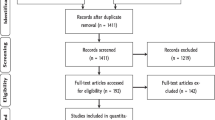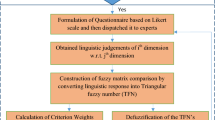Abstract
Agroforestry, as one of integrated approaches to biodiversity conservation, has received attention. But the methods to evaluate this contribution are rare. The present study focuses on the method development for quantification of effects of agroforestry on biodiversity conservation. It includes identifying the functional groups of agroforestry components, defined as a set of species with similar impacts on a system process, and quantifying the distinctness of these groups, as related to wise use of resources and increasing well-being of local people. Combining with functional group-based Analytic Hierarchy Process (AHP) analysis, the present work gives a useful way for an integrated evaluation-planning of agroforestry management relative to biodiversity conservation. It also provides a means to improve our knowledge on the potential roles of agroforestry in biodiversity conservation of nature reserves. The analyses, using the distinctness index of functional groups, demonstrated the impacts of various land-use systems on biodiversity conservation. The analyses, using AHP, ranked the priorities of various agroforestry and plantations on the protection of nature forests, aiming at the long-term solution for the resource support. The present study suggests that agroforestry development for biodiversity conservation should take into account the impacts of functional groups in strategic planning.
Similar content being viewed by others
References
Bellerive Foundation 1992. East Usambaras Conservation and Development Project: Forest Products Survey. Nairobi, Kenya.
Colwell R.K. and Coddington J.A. 1995. Estimating terrestrial biodiversity through Extrapolation. In: Hawksworth D.L. (ed.), Biodiversity Measurement and Estimation. The Alden Press, Osrey Mead, Oxford, pp. 101–118.
Crawley M.J. 1997. Biodiversity. In: Crawley M.J. (ed.), Plant Ecology. 2nd edn. Blackwell Science Ltd, Oxford, pp. 239–261.
Dobson A.P., Bradshaw A.D. and Baker A.J.M. 1997. Hopes for the future: restoration ecology and conservation biology. Science 277: 515–522.
Hobbs S.E., Jensen D.B. and Chapin F.S. 1993. Resource supply and disturbance as controls over present and future plant diversity. In: Schulze E.D. and Mooney H.A. (eds), Biodiversity and Ecosystem Function. Springer-Verlag, Berlin, pp. 385–408.
Hodgson J.G., Thompson K., Wilson P.J. and Bogaard A. 1998. Does biodiversity determine ecosystem function? Functional Ecology 12: 843–847.
Holgate P. 1969. Notes on the Mmarczewski-Steinhaus coefficient of similarity. In: Patil G.P., Pielou E.C. and Waters W.E. (eds), Statistical Ecology. Vol. 3. Pennsylvania State University Press, pp. 181–193.
Hooper D.U. and Vitousek P.M. 1997. The effects of plant composition and diversity on ecosystem process. Science 277: 1302–1305.
Huang W. 1998a. Modelling the coexistence gain and interactions of populations in Taxodium ascendens-intercrop systems. Ecological Modelling 107: 189–212.
Huang W. 1998b. Productive coexistence and gain in agroforestry systems. Acta Forestalia Fennica 260: 1–72.
Huang W., Kanninen M., Xu Q. and Huang B. 1997. Agroforestry in China: present state and future potential. Ambio 26: 393–397.
ICRAF 1997. ICRAF Medium Term Plan 1998–2000. ICRAF, Nairobi, Kenya, 37 pp.
Johansson S. 1996. Facts and figures on the East Usambara Mountains. Tanga, Tanzania, 92 pp.
Kangas J. and Pukkala T. 1996. Operationalization of biological diversity as a decision objective in tactical forest planning. Can J For Res 26: 103–111.
Kuusipalo J. and Kangas J. 1994. Managing biodiversity in a forestry environment. Biological Conservation 8: 450–460.
Lacroix G. and Abbadie L. 1998. Linking biodiversity and ecosystem function: An introduction. Acta Oecologica 19: 189–193.
Leakey R.R.B. 1999. Agroforestry for biodiversity in farming systems. In: Collins W.W. and Qualset C.O. (eds), Biodiversity in Agroecosystems. CRC Press, New York, USA, pp. 127–145.
Leakey R.R.B. and Simons A.J. 1998. The domestication and commercialization of indigeneous trees in agroforestry for the alleviation of poverty. Agroforestry Systems 38: 165–176.
Levandowsky M. and Winter D. 1971. Distance between sets. Nature 234: 34–35.
Nobel I.R. and Dirzo R. 1997. Forests as Human-dominated ecosystems. Science 277: 522–525.
Rodgers W.A. 1996. Biodiversity values of Tanzania forests: a training and awareness manual for forest managers and conservationists.FAO, Dar es Salaam.
Rodgers W.A. and Homewood K.M. 1982. Species richness and endemism in the Usambara Mountain forests, Tanzania. Biological Journal of the Linnean Society 18: 197–242.
Satty T.L. and Kearns K.P. 1985. Analytic Planning: the Organization of Systems. Pergamon Press, Oxford.
Sanchez P.A. 1995. Science in agroforestry. Agroforestry Systems 30: 5–55.
Stuart S.N. 1989. The avifauna of the East Usambara mountains, Chapter 35-Forest conservation in the East Usambara mountains Tanzania. In: Hamilton A.C. and Bensted-Smith R. (eds), Forest Cconservation in the East Usambara Mountains Tanzania. IUCN, Gland, Switserland and Cambridge, UK, pp. 357–361.
Author information
Authors and Affiliations
Corresponding author
Rights and permissions
About this article
Cite this article
Huang, W., Luukkanen, O., Johanson, S. et al. Agroforestry for biodiversity conservation of nature reserves: functional group identification and analysis. Agroforestry Systems 55, 65–72 (2002). https://doi.org/10.1023/A:1020284225155
Issue Date:
DOI: https://doi.org/10.1023/A:1020284225155




